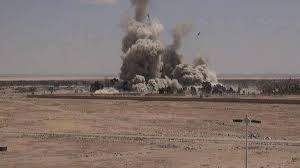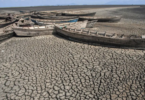Razan Saffour
I met my maternal uncle, Burhan, for the first time in 2018. At the time, I was living in Istanbul, and he had taken refuge with his family in another Turkish city. After we helped him obtain the permissions he needed to make the journey to Istanbul as a refugee, my parents also travelled there to meet him.
My mother had not seen her brother since 1980 – since before she left Syria for good, got married, and raised me and my siblings away from her family, in a foreign country. So when she finally embraced him for the first time in 38 years, having spent half of those years not knowing whether he was dead or alive, it was a sight to behold. As they held on to each other to try and make up for the many lost decades, it felt as if we were all frozen in time. For a fleeting second, I could see my mother as the hopeful young girl she was once, before Syria’s brutal regime uprooted her and devastated her family, killing many of her relatives and scattering the survivors across the globe.
My uncle was arrested and sent to Syria’s infamous Tadmur prison in 1980, just a few weeks after the most horrendous massacre in its history, in which hundreds of political prisoners were executed in a single day.
He remained in that death factory in the Eastern Syrian desert town of Palmyra, under the most inhumane conditions and suffering the worst torture imaginable, for 17 long years. Burhan was eventually released in 1997 – ditched on the side of the road without any explanation – not yet completely free. The regime prevented him from travelling outside of Syria and reuniting with his relatives for another 15 years. After the revolution erupted, he eventually managed to move his family to Turkey. He, however, never truly healed from the trauma he experienced in Tadmur.
“Death surrounded us in Tadmur,” he told me in one of our first-ever conversations. “Bits of flesh and blood from the [June 27] massacre were in the cells upon our arrival. And they remained there, as our friends died all around us, from the torture we endured and the lack of medical attention.
Today marks the 44th anniversary of the Tadmur prison massacre, the immediate aftermath of which my uncle witnessed. Every year, we mark this day to remind the world of the endless brutality and shameless impunity of the Assad regime and renew our calls for justice and accountability. Nearly half a century has passed since that fateful day, but no one has faced any accountability for the June 27 massacre, or the killings and torture that took place in Tadmur for many decades, before and after.
How did the massacre come to be?
The Tadmur prison massacre of June 27, 1980, was committed in reprisal for an assassination attempt against Hafez al-Assad, then president of Syria and father of the current President Bashar al-Assad. The regime blamed the attempt on the Muslim Brotherhood and sought to avenge it by targeting the group’s imprisoned members and perceived sympathisers.
On that morning, under the orders of Rifaat al-Assad, the brother of Hafez, some 100 troops from the Defence Brigades descended into Tadmur from helicopters. They separated perceived Muslim Brotherhood supporters from other political prisoners, and went on to massacre them with machine guns and hand grenades, leaving none of them alive.
The other political prisoners were forced to listen to the carnage in horror.
It is estimated that some 1,000 prisoners were killed within an hour, and their bodies were dumped in a mass grave outside the prison. Syrian human rights groups are still working to create a complete list of victims.
This was an atrocity committed in utmost secrecy. The news only reached the outside world eight months later, when several Syrian soldiers who participated in the massacre were caught in Jordan during an attempt to assassinate the Jordanian prime minister, and confessed to their crimes.
Jordan went on to publicise their confessions, and record them in an official communication to the chairman of the Commission on Human Rights at the United Nations, in March 1981.
Today, as we remember this massacre on its 44th anniversary, we are remembering not only those who were slaughtered on June 27, 1980, but also those, like my uncle, who suffered the wrath of the Assad regime in Tadmur and other Syrian prisons in the following years.
The Syrian Human Rights Committee (SHRC) estimates 17,000 to 25,000 prisoners to have been killed in Tadmur between 1980 and 2001 – the year it was finally decommissioned.
Of course, the abuse and torture of political prisoners in Assad’s Syria did not come to an end with the closure of Tadmur.
Since 2011, the Syrian Network for Human Rights (SNHR) estimates that at least 15,383 people, including 199 children, were tortured to death in Syria’s prisons. Further, at least 157,287 people were forcibly disappeared by the Assad regime and other groups party to Syria’s devastating conflict in the same period. The Syrian regime is believed to be responsible for some 86 percent of these enforced disappearance cases.
Waiting for justice
“There are no words to describe what we saw, what happened to us, what was inflicted upon us at Tadmur,” my uncle Burhan told me during our first meeting. It was clear that his inability to describe what happened to him was rooted not in enduring shock and trauma, but in a genuine inability to find the words and expressions to accurately describe the sheer horror of his recollections.
He was simply unable to describe to the world the extent of the atrocities he witnessed, and demand accountability for those responsible.
Yet my father, Walid, tried to do just that. A former detainee himself, who was tortured in Assad prisons and left with a broken back and visible scars across his body, he dedicated his life to exposing the reality of Syria’s prisons and holding the Assad family to account for what they did to the Syrian people.
In the late 1990s, after Rifaat al-Assad had a falling out with his brother and moved to Europe, my father tried repeatedly to take him to court for his role in the Tadmur massacre and other atrocities. He spent years giving testimonies on Rifaat’s many crimes against humanity, to courts in Spain and France. However, courts in both countries refused to take action, citing a lack of jurisdiction.
In 2003, SHRC was called to court to testify against Rifaat, in a case he himself initiated in a Paris court against activist Nizar Nayyouf. Nayyouf, who had served nine years in Tadmur, accused Rifaat al-Assad of being responsible for the Tadmur massacre live on Al Jazeera Arabic, prompting the former vice president of Syria to take him to court for defamation.
The court eventually ruled in Nayyouf’s favour, but al-Assad was not made to pay any meaningful price for the crimes he committed, or his blatant attempt to use the French judiciary to try and silence his critics.
To this day, neither Rifaat nor any other prominent member of the Assad regime faced any accountability for the pain and trauma they inflicted, and continue to inflict, on detainees in Syria’s prisons.
In March 2024, the Office of the Attorney General in Switzerland charged Rifaat al-Assad with “ordering homicides, acts of torture, cruel treatments and illegal detentions” perpetrated in the course of the Hama massacre in 1982, as well as the Tadmur prison massacre of 1980.
There is little reason to expect 86-year-old Rifaat al-Assad, who is believed to be back in Syria, to ever face a judge in Switzerland and pay a real price for the crimes he perpetrated against the Syrian people. Nevertheless, the indictment provides some respite to his surviving victims and the families of those he massacred, demonstrating to us that the world is finally recognising the harm he and the rest of the regime inflicted on us over the years.
In 2015, ISIL destroyed the Tadmur prison, a major win for the Assad regime that erased crucial evidence of the June 27 massacre and decades of horrific atrocities.
This grim legacy began with the 1000 prisoners killed on June 27, 1980, followed by the tens of thousands more over the next 21 years in Tadmur, and continues with hundreds of thousands across Syria’s prisons to this day.
We will never forget what happened in that desert prison, nor what is happening in the present, and continue our quest in bringing those responsible to justice.







